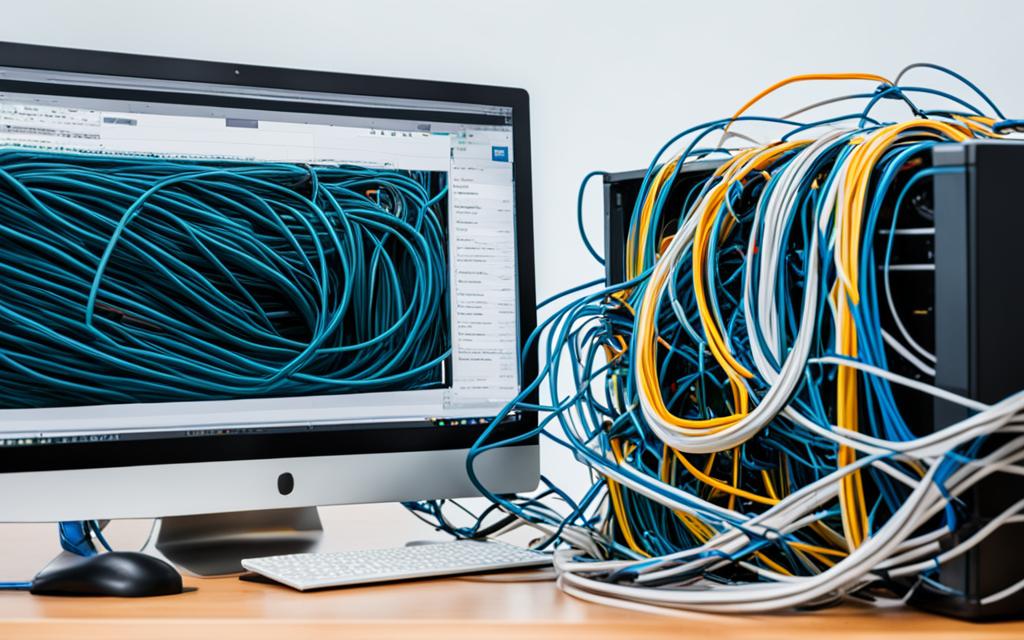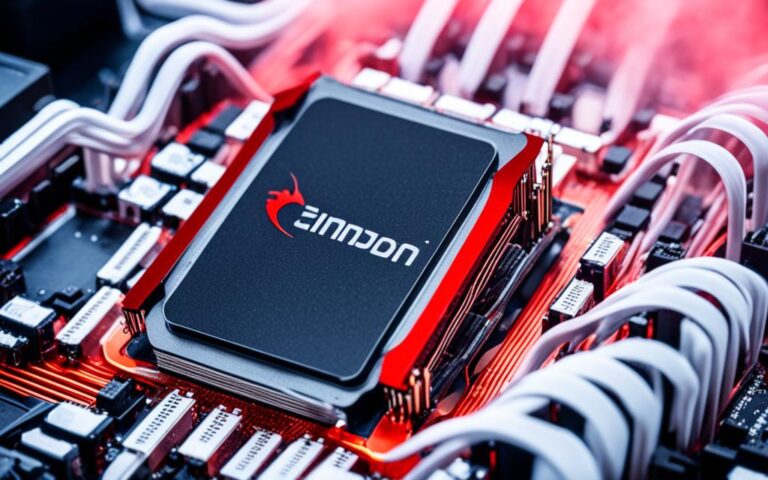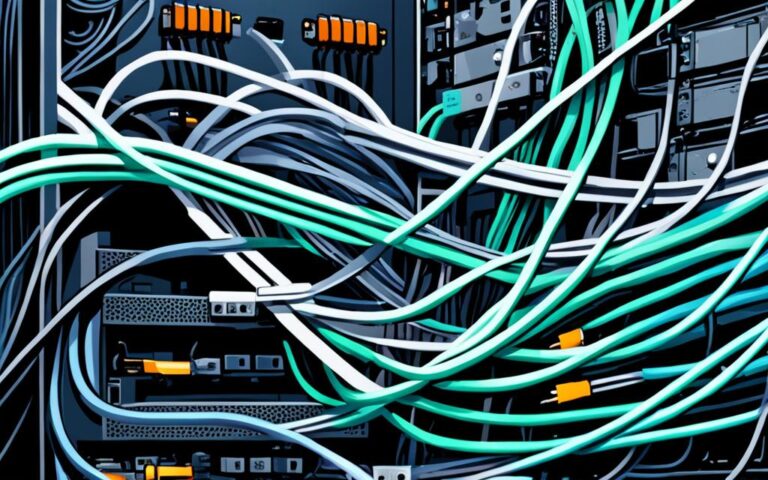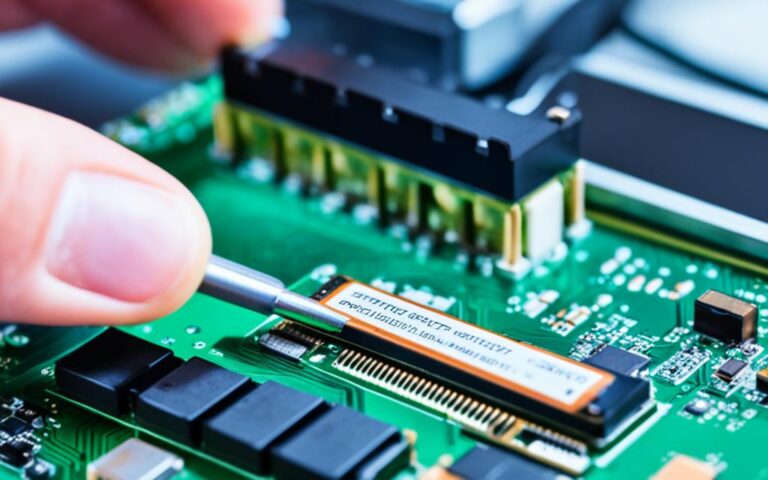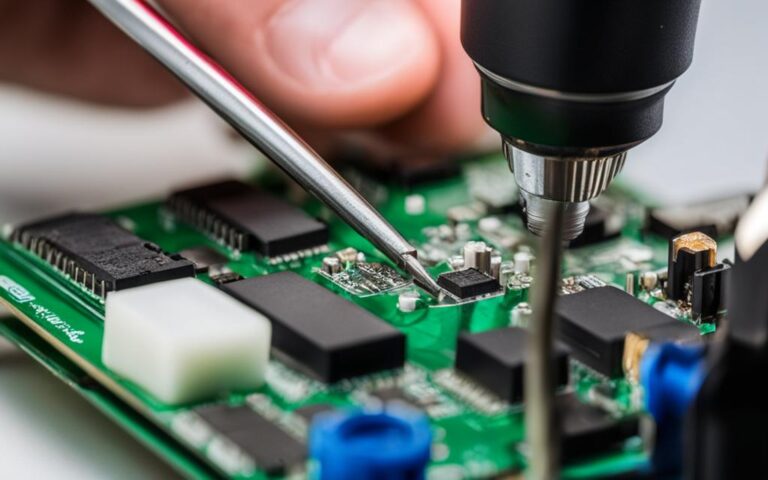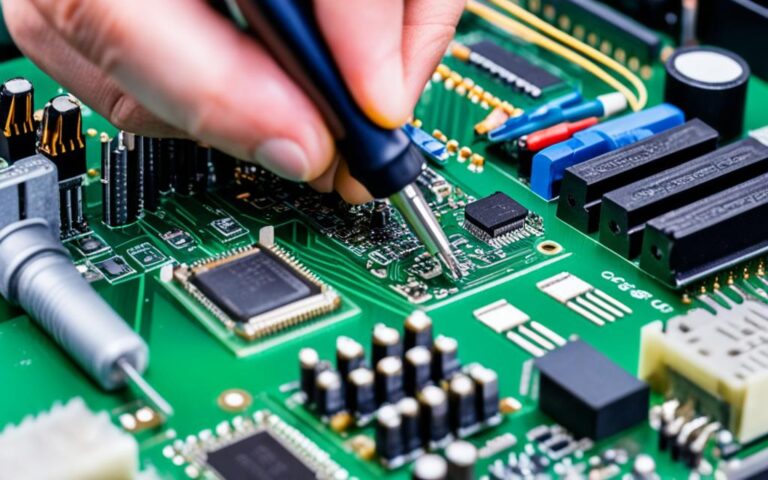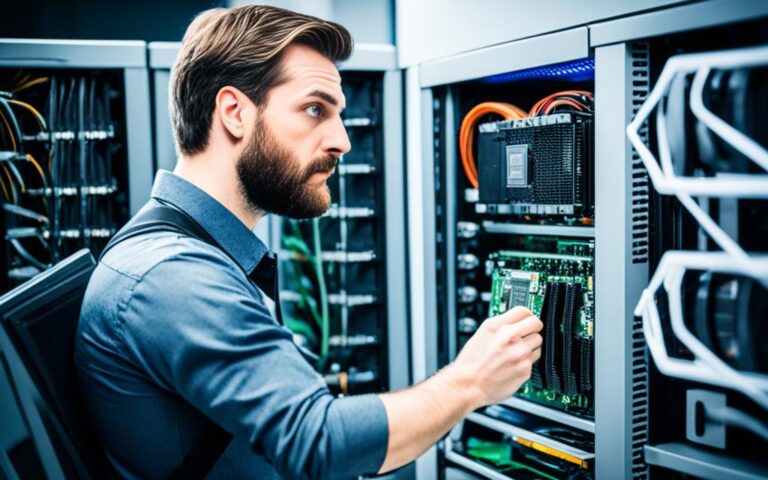Resolving Issues with Desktop BIOS Updates
Updating the BIOS on your desktop computer can enhance its performance and unlock new features. However, BIOS update issues are not uncommon and can cause frustrating problems that hinder the system’s functionality. From freezing and boot failures to hardware malfunctions, encountering these issues can be discouraging. But fear not! This article will provide expert guidance on resolving BIOS update issues, ensuring a smooth and successful system enhancement.
The Importance of BIOS Updates
The performance and security of a computer are highly dependent on regular BIOS updates. As the acronym for Basic Input/Output System suggests, the BIOS is responsible for critical tasks such as verifying hardware components, loading the operating system, and managing certain hardware settings. By updating the BIOS, users can address a range of important aspects, including troubleshooting, hardware compatibility, and security vulnerabilities.
Updating the BIOS is a vital step to ensure optimal system functionality, as it resolves compatibility issues with new hardware, strengthens security measures, and enhances overall performance.
One of the primary benefits of BIOS updates is their ability to resolve compatibility issues between the computer’s motherboard and newly installed hardware. When adding or upgrading hardware components, it is not uncommon for conflicts to arise due to differences in firmware requirements or the inability of the BIOS to recognize certain devices. By updating the BIOS, users can overcome these compatibility issues and ensure that all hardware functions seamlessly.
Furthermore, BIOS updates play a crucial role in addressing security vulnerabilities. As technology evolves, new threats and vulnerabilities emerge, which can put systems at risk. Manufacturers regularly release BIOS updates that include security patches and enhancements, protecting users against potential breaches and unauthorized access. Staying up to date with BIOS updates is, therefore, an essential security measure.
Aside from hardware compatibility and security aspects, BIOS updates can significantly improve the overall performance of a computer. Manufacturers continuously refine their BIOS software to optimize system operations, enhance hardware functionality, and fix any identified issues. By updating the BIOS, users can experience faster boot times, improved stability, and better system responsiveness.
Taking Precautions:
While BIOS updates offer numerous benefits, it is important to approach them with caution due to the potential risks involved. A failed or interrupted BIOS update can lead to a non-functioning system or even permanent damage to the motherboard. Therefore, it is essential to follow instructions carefully, ensure a stable power source during the update process, and have a backup plan in case any issues arise.
In Summary
BIOS updates are critical for maintaining optimal computer performance and security. They address hardware compatibility issues, enhance system stability, and strengthen security measures against vulnerabilities. However, it is crucial to exercise caution and follow best practices when performing BIOS updates to mitigate potential risks.
Common Issues with BIOS Updates
Despite the benefits of BIOS updates, they can sometimes lead to system crashes and corrupted BIOS if not performed correctly. A smooth and successful BIOS update requires users to be aware of common issues and take necessary precautions.
Incompatible Hardware Configurations
One of the common issues faced during BIOS updates is incompatible hardware configurations. When updating the BIOS, it’s crucial to ensure that the hardware components are compatible with the new firmware version. Incompatible hardware can cause system instability, crashes, and even corrupt the BIOS.
Improper BIOS Settings
Incorrect BIOS settings can also lead to issues after performing the update. It’s important to review the BIOS settings before and after the update to ensure they are appropriately configured. Incorrect settings can result in system crashes, slow performance, and unstable behavior.
Power Failures during Update
Power failures or interruptions during the update process can have disastrous consequences. It’s essential to avoid power outages and ensure a reliable power source during a BIOS update. A sudden loss of power can corrupt the update, making the system unbootable and requiring additional troubleshooting to recover.
“Updating the BIOS without proper caution can result in system crashes, corrupted BIOS, and potential data loss. Users must follow the necessary steps and precautions to minimize these risks and ensure a successful update.”
To avoid the aforementioned issues, users should follow proper procedures when updating the BIOS:
- Use a reliable power source, such as a UPS (Uninterruptible Power Supply), to prevent power failures during the update process.
- Ensure compatibility between the hardware components and the new firmware version to avoid any compatibility issues.
- Double-check the BIOS settings before and after the update to ensure they are correctly configured.
By adhering to these precautions, users can minimize the chances of encountering system crashes, corrupted BIOS, and other problems during the BIOS update process.
Note: Image above depicts the potential issues and risks associated with BIOS updates.
Troubleshooting BIOS Update Problems
When encountering issues with a BIOS update, troubleshooting is necessary to identify and resolve the problem. To effectively troubleshoot BIOS update problems, follow these steps:
- Enter BIOS Recovery Mode: If the BIOS update fails or causes system instability, entering BIOS recovery mode can help restore the previous BIOS version. Consult your motherboard’s manual for instructions on accessing this mode.
- Check Error Codes: When performing a BIOS update, the motherboard may display error codes that provide valuable information about the issue. Refer to the motherboard manual or manufacturer’s website to interpret these error codes and take appropriate action.
- Start in Safe Mode: Starting the computer in safe mode can help isolate any software conflicts that may be causing BIOS update problems. In safe mode, only essential drivers and services are loaded, allowing you to troubleshoot without interference from third-party software.
It’s important to have a backup plan in case of a failed BIOS update. Consider utilizing a BIOS recovery feature, if available, to restore the BIOS or seek professional assistance to ensure the problem is resolved effectively.
Example Troubleshooting Scenario
John is updating the BIOS on his desktop computer when he encounters an error code on the motherboard. Unsure about the next steps, he decides to consult the motherboard’s manual to decipher the error code. After identifying the issue, John successfully enters BIOS recovery mode and restores the previous BIOS version. The system stabilizes, and John is able to address the problem effectively.
Remember, troubleshooting BIOS update problems requires attention to detail and careful execution of the recommended steps. Having a backup plan and seeking professional assistance when needed can help ensure a successful resolution.
Best Practices for Successful BIOS Updates
When it comes to updating your BIOS, following best practices is essential for a smooth and successful process. By adhering to these guidelines, you can avoid potential issues and ensure your system remains stable and secure.
- Backup your data: Before proceeding with a BIOS update, it’s crucial to back up all your important data. This step acts as a safety net in case anything goes wrong during the update process. Whether you choose to use an external storage device or a cloud-based solution, make sure your data is securely backed up.
- Ensure a stable power source: A stable and uninterrupted power source is vital during a BIOS update. Any power interruptions or fluctuations can lead to an incomplete update or even damage your hardware. It’s recommended to connect your computer to a UPS (Uninterruptible Power Supply) or use a reliable power outlet to avoid any unexpected incidents.
- Follow manufacturer’s instructions: Each motherboard manufacturer provides specific instructions for updating your BIOS. It’s crucial to carefully read and follow these instructions to ensure a successful update. Ignoring or deviating from the recommended steps can lead to compatibility issues or system instability.
- Update other drivers and perform maintenance: Alongside updating the BIOS, it’s a good practice to update other drivers on your system. This helps maintain overall system compatibility and performance. Additionally, performing regular maintenance tasks like disk cleanup and defragmentation can further optimize your system’s performance after the BIOS update.
By incorporating these best practices into your BIOS update process, you can minimize the risk of encountering issues and ensure a smooth transition to an improved system.
Expert Insight:
“Following best practices for BIOS updates is crucial to ensure a stable and secure system. Backing up important data, maintaining a stable power source, and carefully adhering to manufacturer instructions are essential steps for success.”
| Best Practices for Successful BIOS Updates |
|---|
| Backup your data |
| Ensure a stable power source |
| Follow manufacturer’s instructions |
| Update other drivers and perform maintenance |
Seeking Professional Help
In some cases, users may encounter complex BIOS update issues that require professional assistance. If the computer becomes unbootable or experiences persistent problems after the update, it’s advisable to consult a repair shop or contact the manufacturer for support. It’s important to understand the warranty coverage and any associated costs for hardware repairs or replacements.
When facing hardware issues related to BIOS updates, seeking professional assistance is crucial for a timely resolution. A knowledgeable technician can diagnose the problem accurately and provide the necessary expertise to resolve it effectively. While DIY troubleshooting can be tempting, it can often lead to further complications and potential damage to the system.
Repair Shop or Manufacturer Support?
When considering professional help, users have two primary options: visiting a reputable repair shop or contacting the original equipment manufacturer (OEM) for support. Each option has its advantages and considerations.
Repair Shop:
- Local repair shops offer professional assistance for various hardware issues, including those related to BIOS updates.
- Experienced technicians can diagnose and repair a wide range of computer problems, ensuring a comprehensive solution.
- Repair shops may have faster turnaround times, allowing users to get their systems back up and running sooner.
- Be sure to choose a trusted repair shop with a good reputation to ensure quality service and avoid potential scams.
Manufacturer Support:
- Contacting the manufacturer provides access to specialized technical support teams who are well-versed in their specific products.
- Manufacturer support can offer tailored assistance and troubleshooting guidance for BIOS update issues.
- Depending on the warranty coverage, repairs or replacements may be performed at no additional cost.
- Users should be prepared to provide detailed information about their system, including the BIOS version, hardware specifications, and any error codes or messages received.
Before seeking professional assistance, users should consult their warranty documents to determine the coverage and any associated costs for hardware repairs or replacements. This will help ensure a smooth and cost-effective resolution to the BIOS update issues.
| Professional Help Options | Advantages | Considerations |
|---|---|---|
| Repair Shop |
|
|
| Manufacturer Support |
|
|
Seeking professional help for BIOS update issues ensures that the problem is addressed by experts who have the knowledge and resources to resolve it effectively. Whether choosing a repair shop or contacting the manufacturer, users can have peace of mind knowing that their system is in capable hands.
Conclusion
Resolving BIOS update issues can be challenging, but with the right knowledge and expert guidance, users can overcome these problems and achieve a smooth and successful system enhancement. By following best practices, troubleshooting effectively, and seeking professional help when needed, desktop computer users can optimize their system’s performance and stability.
It is crucial to emphasize the importance of backing up important data before performing any BIOS update and proceeding with caution throughout the process. This precautionary measure minimizes the risks of data loss or system instability.
Whether addressing compatibility issues, resolving system crashes, or safeguarding against security vulnerabilities, expert guidance and a systematic approach are key to a successful BIOS update. Minimize risks, enhance your computer’s performance, and enjoy the benefits of the latest software and hardware advancements with a well-executed BIOS update.
